This manual provides essential guidance for Club Car charger operation, maintenance, and troubleshooting. It ensures safe and efficient charging for optimal vehicle performance and battery longevity.
1.1 Overview of Club Car Chargers
Club Car chargers are designed to provide reliable and efficient charging for golf carts and utility vehicles. They feature fully automatic operation, requiring no manual adjustments, and are tailored for specific Club Car models. The chargers automatically detect battery voltage and adjust charging cycles to ensure optimal performance. Key models include the Accu-Power and PowerDrive chargers, which are compatible with various Club Car vehicles, such as the Precedent and Villager 4. These chargers are built with advanced safety features, including automatic shut-off and overcharge protection, to prevent battery damage. They also support long-term storage modes to maintain battery health when vehicles are not in use. Proper use of these chargers ensures extended battery life and consistent vehicle performance.
1.2 Importance of Following the Manual
Adhering to the Club Car charger manual is crucial for ensuring safe and effective charging. Proper procedures prevent overcharging, which can damage batteries and reduce their lifespan. The manual provides guidelines to avoid electrical hazards, such as incorrect voltage settings or improper connections, which could lead to safety risks. Following the manual also helps maintain warranty validity, as deviations from recommended practices may void coverage. Additionally, it ensures compliance with environmental regulations, particularly regarding battery disposal and recycling. By following the manual, users can optimize charger performance, extend battery life, and contribute to eco-friendly practices. Consistent adherence to the guidelines ensures reliable vehicle operation and enhances overall user satisfaction.
1.3 Key Features of Club Car Chargers
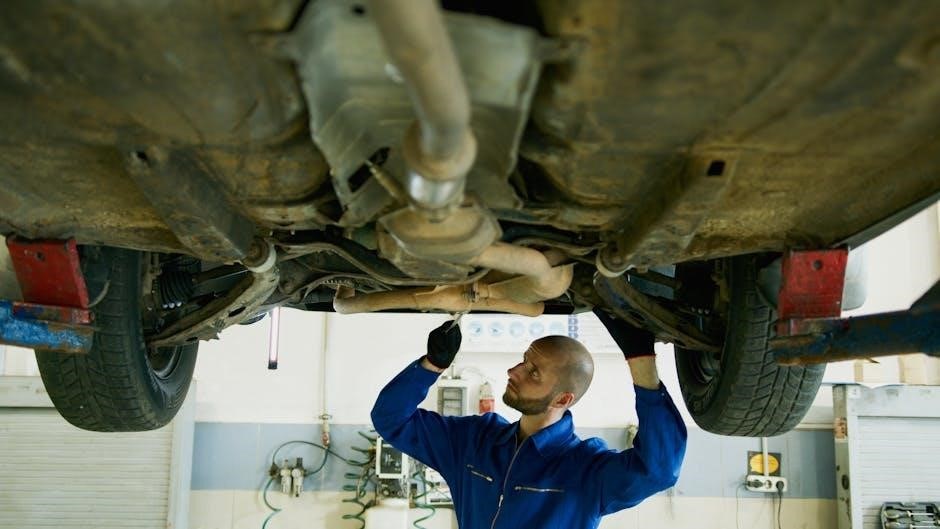
Club Car chargers are designed with advanced features to ensure efficient and safe battery charging. The Accu-Power charger operates automatically, requiring no manual adjustments, and compensates for variable AC voltage. PowerDrive chargers integrate seamlessly with Club Car’s onboard computer systems, optimizing charge cycles for specific vehicle models. Key features include automatic shut-off upon full charge, overcharge protection, and compatibility with deep-cycle lead-acid batteries. Some models, like the ERIC charging system, offer enhanced monitoring and control. These chargers are built to support long-term battery health and vehicle performance, while also incorporating eco-friendly practices. Their robust design ensures reliability and durability, making them a trusted choice for Club Car owners seeking consistent and efficient charging solutions.
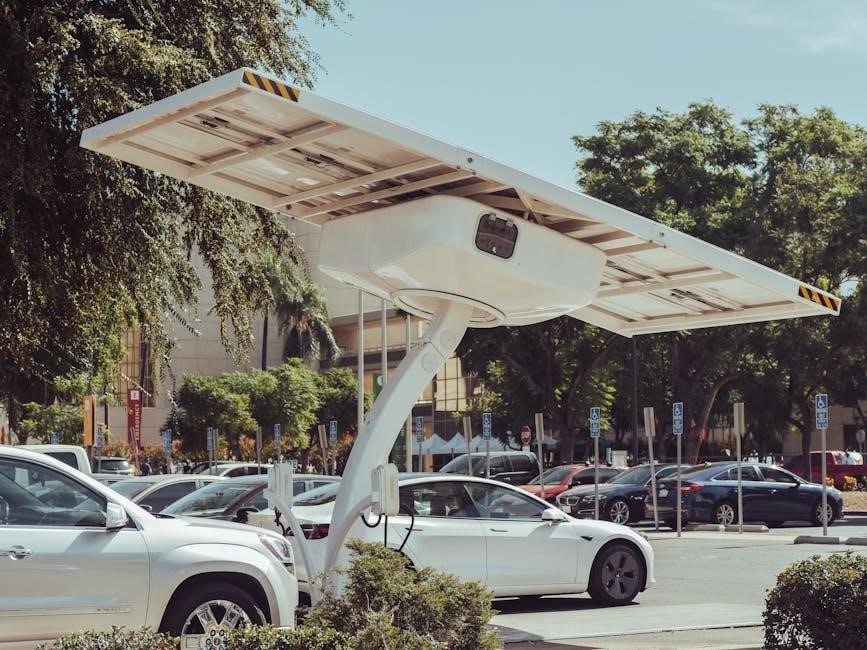
Types of Club Car Chargers
Club Car offers three primary charger types: Accu-Power, PowerDrive, and ERIC. Each design caters to different vehicle models and charging needs, ensuring efficient battery management and optimal performance.
2.1 Accu-Power Battery Charger
The Accu-Power Battery Charger is a fully automatic, 36-volt electric charging system designed for Club Car vehicles. It features a user-friendly interface with no knobs or buttons, automatically turning on and off based on battery charge levels. This charger compensates for variable AC voltage supply, ensuring consistent charging performance. It is ideal for deep-cycle, lead-acid batteries, utilizing a solid-state automatic shut-off circuit to prevent overcharging. The Accu-Power charger is compatible with Club Car’s V-Glide models and is known for its reliability and efficiency in maintaining battery health. It is a preferred choice for users seeking hassle-free, high-performance charging solutions for their electric vehicles.
2.2 PowerDrive Battery Charger
The PowerDrive Battery Charger is an integral component of Club Car’s Excel, IQ, and PowerDrive systems, ensuring reliable and efficient battery charging. It operates automatically, controlled by the vehicle’s onboard computer, making it compatible exclusively with Excel, IQ, PowerDrive, and PowerDrive Plus models. This charger is designed to work seamlessly with the vehicle’s electrical system, providing consistent power and optimizing battery performance. Its integration with advanced vehicle systems allows for precise charging cycles, enhancing overall efficiency and longevity of the batteries. The PowerDrive Charger is a key feature in Club Car’s innovative approach to electric vehicle technology, offering users a dependable and high-performance charging solution.
2.3 ERIC Charging System
The ERIC (Efficient Reach-In Charger) system is a cutting-edge charging solution designed for Club Car electric vehicles. It is specifically integrated into the Precedent Golf Car models, offering advanced charging capabilities. The ERIC system ensures efficient and safe battery charging, with automatic shut-off once the batteries are fully charged. This system is user-friendly, requiring minimal input, and is designed to optimize battery longevity. The ERIC Charging System is a key feature of Club Car’s electric vehicles, providing reliable performance and enhancing the overall user experience. It is fully compatible with the Precedent Golf Car’s electrical architecture, making it a seamless addition to the vehicle’s operation.
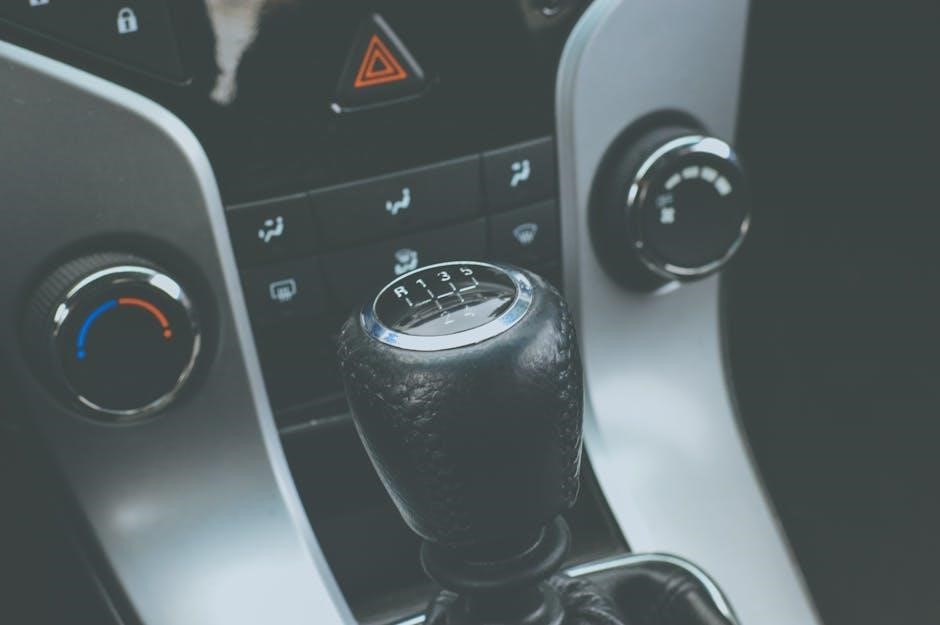
Charger Compatibility and Models
This section details compatibility between Club Car chargers and specific vehicle models, including Precedent Golf Car, Villager 4, and IQ System, to ensure optimal charging performance.
3.1 Club Car Precedent Golf Car Chargers
The Club Car Precedent Golf Car is equipped with the ERIC (Efficient Reccharging Interface Controller) charging system, designed for optimal battery performance. This advanced charger ensures automatic, efficient charging with no manual adjustments required. It is compatible with both 36-volt and 48-volt battery systems, making it versatile for various configurations. The ERIC system also includes safety features such as overcharge protection and automatic shut-off once batteries are fully charged. For emergency situations, the Precedent Golf Car includes a DC receptacle connected to the batteries, allowing the use of a stationary charger. Proper use of the ERIC system ensures extended battery life and reliable vehicle operation. Always consult the manual for specific charging guidelines and safety precautions.
3.2 Club Car Villager 4 Chargers
The Club Car Villager 4 Chargers are designed for efficiency and reliability, supporting the vehicle’s electrical systems. These chargers are compatible with both 36-volt and 48-volt battery configurations, ensuring optimal performance. The Villager 4 Chargers feature automatic charging, eliminating the need for manual adjustments. They include advanced safety features such as overcharge protection and automatic shut-off, preserving battery health. The system is integrated with the vehicle’s onboard computer, ensuring seamless operation. For emergency charging, the Villager 4 can be equipped with a DC receptacle. Proper maintenance and adherence to the manual’s guidelines are crucial for longevity and safety. Always refer to the Club Car manual for specific instructions and troubleshooting tips to maintain peak performance and ensure reliable operation of the Villager 4 Chargers.
3.3 Club Car IQ System Chargers
The Club Car IQ System Chargers are advanced chargers designed to work seamlessly with the IQ System electric vehicles. These chargers are fully automatic and integrate with the vehicle’s onboard computer for precise charging. They support 36-volt and 48-volt battery configurations, ensuring optimal charging performance. The IQ System Chargers feature advanced diagnostic capabilities, providing real-time feedback on charging status. They include safety features such as overcharge protection and automatic shut-off, enhancing battery longevity. The system is compatible with both standard and high-frequency chargers, offering flexibility for different vehicle models. Proper installation and maintenance, as outlined in the manual, are essential for reliable operation. Always follow the guidelines to ensure safety and efficiency when using the Club Car IQ System Chargers.

Battery Charger Maintenance
Regular inspection of cables and connections ensures optimal performance. Proper storage and adherence to maintenance guidelines prevent damage and prolong charger efficiency.
4.1 Routine Maintenance Tips
Regularly inspect the charger’s power cord and connectors for damage or wear. Clean battery terminals to ensure proper electrical connections. Avoid overcharging, as it can reduce battery lifespan. Store the charger in a cool, dry place to prevent damage. Check for loose wires or faulty components and address them promptly. Use the OBC bypass kit if necessary to maintain charging efficiency. Always follow the manufacturer’s guidelines for routine checks to ensure optimal performance and safety. Proper maintenance helps extend the life of both the charger and the batteries, ensuring reliable operation of your Club Car vehicle. Schedule regular inspections to prevent unexpected issues and maintain peak charging efficiency.
4.2 Troubleshooting Common Issues
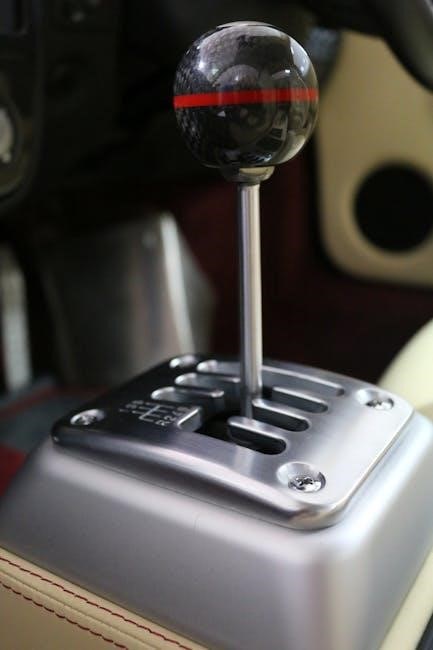
Common issues with Club Car chargers include error codes, incomplete charging, or no power output. Check for loose connections or damaged cords. Ensure the vehicle is properly connected to the charger. Verify the circuit breaker hasn’t tripped. If the charger doesn’t turn on, inspect the AC power supply. For error codes, refer to the manual for specific solutions. If the battery doesn’t charge fully, check the OBC bypass status or battery health. Consult the troubleshooting section in the manual for detailed guidance. Contact an authorized dealer for persistent issues. Regular checks and timely repairs prevent prolonged downtime and ensure reliable operation of your Club Car vehicle. Always follow safety guidelines when troubleshooting electrical systems to avoid hazards.
4.3 OBC Bypass Kit Installation
Installing the OBC Bypass Kit (part number 38836) is essential for vehicles without an onboard computer or to disable it temporarily. Start by disconnecting the battery cables, ensuring the vehicle is in the “TOW” mode to prevent power drain. Locate the OBC module, typically under the seat or near the batteries. Connect the bypass kit according to the manual’s wiring diagram, ensuring all connections are secure. Tighten terminals to the specified torque to prevent loose connections. Reconnect the battery cables in reverse order and test the charger. This procedure allows the charger to function correctly without OBC interference, ensuring proper charging and system compatibility. Always follow safety precautions to avoid electrical shocks or system damage during installation. Consult a professional if unsure about any step to maintain system integrity and functionality.

Safety Precautions
Warning: Club Car chargers contain chemicals known to cause cancer and reproductive harm. Avoid exposure, ensure proper electrical connections, and seek shelter during storms. Follow manual guidelines.
5.1 General Safety Guidelines
Always follow these guidelines to ensure safe operation of your Club Car charger. Avoid exposure to harmful substances like lead and sulfuric acid. Properly connect the charger to prevent electrical hazards. Keep the charger away from water and flammable materials. Ensure the vehicle is on a level surface during charging. Avoid overcharging, as it can damage the batteries. Wear protective gear, including gloves and eye protection, when handling batteries. Never allow metal objects to touch battery terminals or the vehicle frame. In case of an emergency, disconnect the positive battery cable and seek shelter. Follow all safety symbols and warnings provided in the manual. Adhere to local regulations for battery recycling and disposal. Regularly inspect the charger and cables for damage. Store batteries in a well-ventilated area away from direct sunlight. Follow the manufacturer’s instructions for proper charging procedures.
5.2 Handling Battery Terminals
Disconnect the negative (-) cable first when handling battery terminals to avoid electrical shocks; Wait 90 seconds after disconnecting to allow capacitors to discharge. Never allow metal objects to touch both terminals or the vehicle frame, as this can cause short circuits. Clean terminals regularly with a wire brush to remove corrosion. Apply Battery Terminal Protector Spray (CC P/N 1014305) to prevent rust and corrosion. Ensure terminals are tightly secured to maintain proper connections. Avoid over-tightening, which can damage the terminals. Always reconnect the positive (+) cable first when reconnecting batteries. Use insulated tools to prevent accidental contact with live terminals. Keep terminals dry and free from debris to ensure safe and efficient charging. Regular inspection of terminals is crucial for maintaining electrical system integrity.
5.3 Emergency Charging Procedures
In emergency situations, Club Car vehicles equipped with an onboard charger also have a DC receptacle connected to the batteries. This allows for charging with a stationary charger. Always disconnect the negative (-) cable first to prevent electrical shocks. Wait 90 seconds after disconnecting to ensure capacitors discharge. Use a stationary charger compatible with your vehicle’s voltage system. Avoid charging in wet conditions or enclosed spaces without proper ventilation. Ensure the charger is properly grounded to prevent electrical hazards. If unsure, consult your Club Car dealer or the manual for specific instructions. Never bypass safety features or ignore warnings, as this can damage the system or pose safety risks. Always prioritize safety when performing emergency charging procedures.
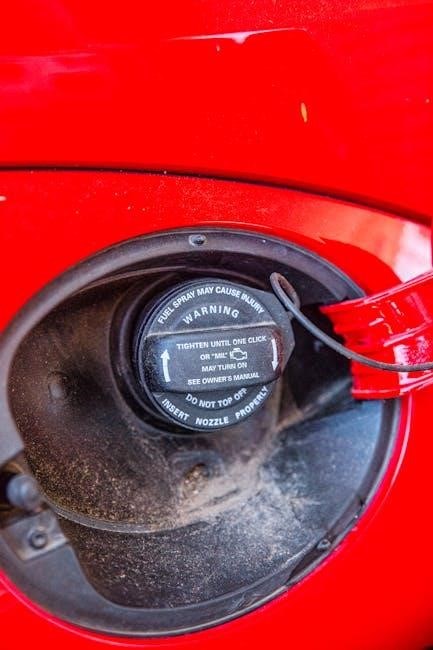
Technical Specifications
Club Car chargers feature voltage ratings of 36 or 48 volts, with power outputs suited for deep-cycle lead-acid batteries. Chargers include automatic shut-off and compatibility with various Club Car models.
6.1 Voltage and Power Ratings
Club Car chargers are designed to operate at 36-volt or 48-volt systems, ensuring compatibility with deep-cycle lead-acid batteries. The Accu-Power charger, for instance, delivers a maximum charge voltage of 37.2V for 36V systems and 48.6V for 48V systems. PowerDrive chargers, such as the PowerDrive 3, are rated for continuous operation at 36V or 48V, with power outputs tailored to specific Club Car models. These chargers feature advanced taper charging technology, which ensures safe and efficient battery charging. Always consult the manual for exact voltage and power specifications, as they may vary depending on the charger model and vehicle configuration. Proper alignment of charger settings with battery voltage is essential for optimal performance and longevity.
6.2 Charger Efficiency and Design
Club Car chargers are engineered with high-efficiency designs to minimize energy loss and optimize charging performance. The Accu-Power charger features a ferro-resonant design with automatic shut-off, ensuring precise control over the charging process. PowerDrive chargers utilize advanced solid-state technology, enabling efficient energy transfer and reduced heat generation. These designs not only extend battery life but also lower overall energy consumption. Additionally, Club Car chargers incorporate intelligent algorithms that monitor battery health and adjust charging parameters accordingly. This intelligent design ensures safe and efficient charging, even in varying environmental conditions. The compact and durable construction of Club Car chargers makes them suitable for both indoor and outdoor use, providing reliable service in diverse applications.
6.3 Compatibility with Vehicle Models
Club Car chargers are designed to seamlessly integrate with various vehicle models, ensuring optimal performance and compatibility. The Accu-Power charger is ideal for Precedent and IQ system electric vehicles, while the PowerDrive charger is tailored for Excel, IQ, and PowerDrive Plus models. Each charger is engineered to match the specific voltage and power requirements of its corresponding vehicle, guaranteeing efficient and safe charging. For older models or vehicles without onboard computers, Club Car offers bypass kits to ensure compatibility. This universal design ensures that all Club Car vehicles can be charged effectively, maintaining their performance and longevity. By adhering to vehicle-specific specifications, Club Car chargers deliver reliable and consistent results across their entire product lineup.

Customer Support and Resources
Club Car offers comprehensive support through authorized dealers, warranty services, and digital manuals. Contact dealers for technical advice, repairs, and genuine parts for optimal assistance and maintenance.
7.1 Contacting Authorized Dealers
Contacting authorized Club Car dealers ensures access to genuine parts, expert advice, and reliable service. Dealers can address technical inquiries, perform warranty repairs, and provide maintenance guidance. To find a local authorized dealer, visit www.clubcardealer.com or call 1-800-ClubCar (258-2227). Additionally, a QR code reader can be used to access the dealer locator directly. Dealers offer detailed troubleshooting support and sell official manuals, ensuring compliance with safety and operational standards. For specific needs, such as the OBC bypass kit (part number 38836), dealers can provide precise instructions and genuine components. Their expertise guarantees proper charger functionality and vehicle performance, making them the primary resource for all Club Car charger-related needs.
7.2 Warranty Information
Club Car chargers are backed by comprehensive warranty programs, ensuring protection against manufacturing defects. The warranty typically covers parts and labor for a specified period, depending on the charger model and usage. For details, refer to the warranty section in the charger’s manual or contact an authorized dealer. Proper maintenance and adherence to the manual’s guidelines are essential to maintain warranty validity. Club Car stands behind its products, offering reliable support for any issues that may arise. Always register your product with Club Car to ensure seamless warranty claims and extended support benefits. This commitment to quality ensures your charger operates efficiently and securely throughout its lifespan.
7.3 Accessing Digital Manuals
Digital manuals for Club Car chargers are readily available online, providing easy access to essential information. Visit the official Club Car website or authorized dealer portals to download PDF versions of manuals specific to your charger model. These manuals are free and require no registration, ensuring quick access to guidance on operation, maintenance, and troubleshooting. Use the search function to locate your charger model, and download the manual for offline use. Additionally, some manuals include QR codes linking directly to digital versions, making access even more convenient. Always refer to the most recent manual for updated information and ensure compatibility with your charger model for accurate instructions and safety guidelines.
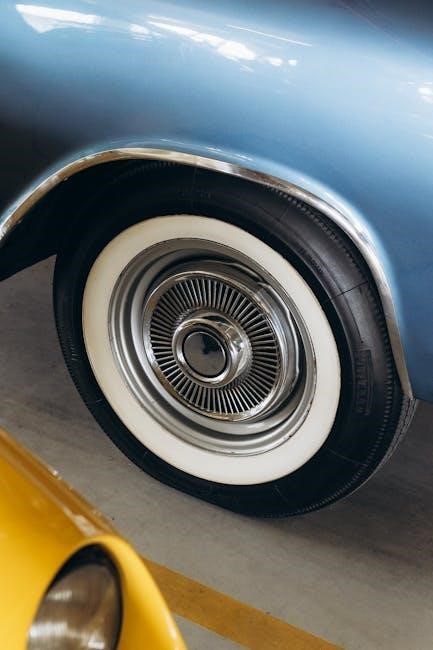
Environmental Considerations
Proper disposal and recycling of batteries are crucial for environmental protection. Club Car chargers promote eco-friendly practices, ensuring safe disposal and reducing environmental impact through sustainable charging methods.
8.1 Proper Battery Disposal
Proper disposal of Club Car batteries is essential to protect the environment. Lead-acid batteries contain hazardous materials that can harm ecosystems if not disposed of correctly. Users should ensure batteries are recycled at authorized facilities. Club Car recommends contacting local dealers or recyclers for guidance. Improper disposal can lead to soil and water contamination, posing risks to health and wildlife. Always follow regional regulations and safety guidelines when handling battery disposal. Club Car emphasizes environmental responsibility, encouraging sustainable practices to minimize ecological impact. Remember, proper disposal helps conserve natural resources and promotes a safer environment for future generations. Refer to local recycling programs for assistance with Club Car battery disposal;
8.2 Recycling Guidelines
Recycling Club Car batteries is crucial for environmental conservation. Lead-acid batteries must be taken to authorized recycling centers to prevent hazardous materials from contaminating soil and water. Remove personal data from manuals before recycling. Ensure batteries are prepared according to local guidelines, such as securing terminals to prevent short circuits. Contact local Club Car dealers or recyclers for specific instructions. Many communities offer designated drop-off locations for battery recycling. Proper recycling ensures materials are repurposed, reducing the need for raw material extraction; Club Car supports eco-friendly practices and encourages users to participate in sustainability efforts. Always follow regional regulations when recycling batteries to promote environmental safety and resource conservation.
8.3 Eco-Friendly Charging Practices
Adopting eco-friendly charging practices minimizes environmental impact while optimizing battery performance. Use Club Car chargers with high efficiency ratings to reduce energy consumption. Avoid overcharging by monitoring charge cycles and using automatic shut-off features. Regularly inspect and clean battery terminals to ensure proper connections, reducing waste and energy loss. For emergencies, use the OBC bypass kit responsibly to prevent unnecessary battery strain. Consider integrating renewable energy sources, like solar panels, for charging. Always follow Club Car’s eco-conscious guidelines to promote sustainability. Properly dispose of old batteries and recyclable materials through authorized programs. By adhering to these practices, users contribute to a greener environment while maintaining their vehicle’s reliability and performance.


